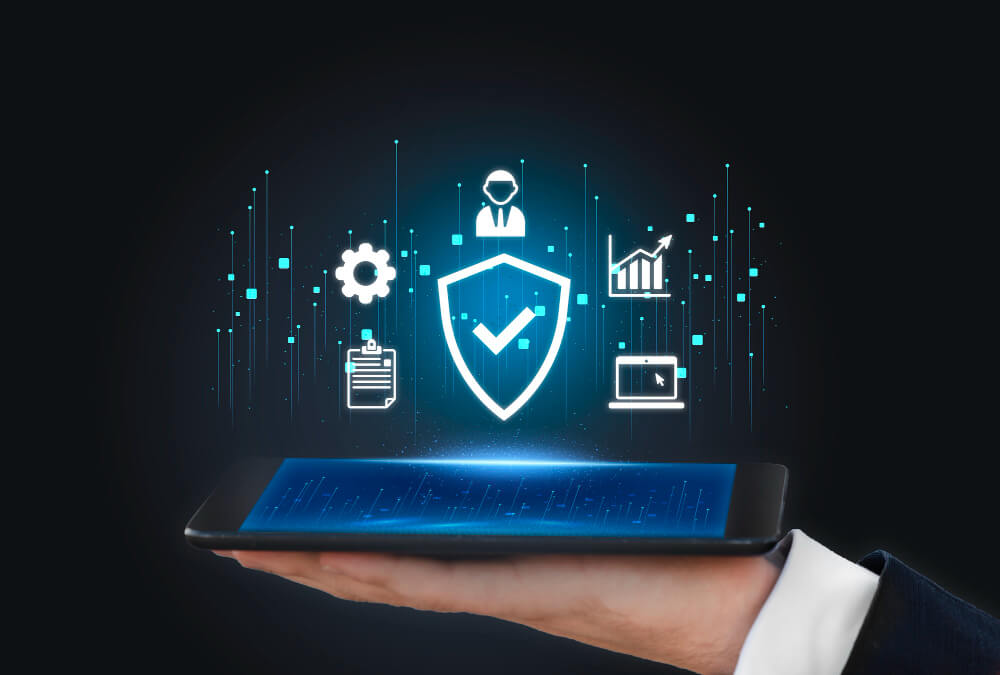
In today’s rapidly evolving digital landscape, where businesses are increasingly embracing digital transformation to stay competitive, the importance of cybersecurity cannot be overstated. As organizations digitize their operations, they become more interconnected and reliant on technology, making them vulnerable to a wide range of cybersecurity threats. This introduction sets the stage for exploring the intricate relationship between digital transformation and cybersecurity, highlighting the critical need for robust security measures in safeguarding sensitive data and ensuring the resilience of modern enterprises.
Understanding Cybersecurity Threats
To effectively safeguard against cyber attacks, it’s crucial to have a clear understanding of the diverse range of threats that organizations face in today’s digital landscape. Cybersecurity threats encompass various malicious activities perpetrated by cyber criminals with the intent of compromising data, disrupting operations, or causing financial harm. This section explores common types of cybersecurity threats, including malware, phishing, ransomware, insider threats, DDoS attacks, and social engineering, shedding light on their methodologies and potential impact on organizations. By comprehensively analyzing these threats, businesses can better equip themselves with the knowledge and tools necessary to mitigate risks and enhance their cybersecurity posture.
Types of Cybersecurity Threats
Cybersecurity threats come in many forms, each presenting unique challenges to organizations’ security postures. Understanding these different types of threats is essential for implementing effective defense strategies. Here are some of the most prevalent cybersecurity threats:
- Malware: Malicious software designed to infiltrate systems and cause damage, such as viruses, worms, trojans, and spyware.
- Phishing: Deceptive attempts to trick individuals into divulging sensitive information, often through fraudulent emails, messages, or websites impersonating trusted entities.
- Ransomware: Malware that encrypts files or locks users out of their systems until a ransom is paid, posing a significant threat to data integrity and operational continuity.
- Insider Threats: Risks originating from within an organization, including malicious actions by employees, contractors, or partners with access to sensitive data or systems.
- DDoS Attacks (Distributed Denial of Service): Coordinated efforts to overwhelm a system or network with a flood of traffic, rendering it inaccessible to legitimate users.
- Social Engineering: Manipulative techniques used to exploit human psychology and trick individuals into revealing confidential information or performing unauthorized actions.
Digital Transformation and Its Vulnerabilities
Digital transformation, while offering numerous benefits such as increased efficiency and innovation, also introduces vulnerabilities that can be exploited by cyber attackers. This section examines the vulnerabilities inherent in the process of digital transformation:
Integration of IoT Devices
The proliferation of Internet of Things (IoT) devices introduces new entry points for cyber threats, as these interconnected devices often lack robust security measures, making them susceptible to exploitation.
Cloud Computing Risks
As organizations migrate their data and applications to cloud environments, they face risks associated with data breaches, misconfigurations, and unauthorized access, highlighting the importance of secure cloud adoption practices.
BYOD (Bring Your Device) Policies
The adoption of BYOD policies allows employees to use personal devices for work purposes, presenting security challenges related to device management, data protection, and the potential for unauthorized access to corporate networks.
Increased Data Accessibility
While digital transformation enhances data accessibility and collaboration, it also expands the attack surface by increasing the volume of sensitive data stored and transmitted across networks, necessitating robust data protection measures.
Read Also: Exploring the Future of Virtual Reality Gaming
The Role of Regulations and Compliance
In the face of escalating cyber threats, regulations and compliance standards play a crucial role in promoting cybersecurity best practices and ensuring accountability across industries. This section delves into the significance of regulations and compliance frameworks:
GDPR (General Data Protection Regulation)
Enforced by the European Union (EU), GDPR establishes stringent requirements for the protection of personal data, imposing strict penalties for non-compliance and enhancing individuals’ rights regarding their data privacy.
CCPA (California Consumer Privacy Act)
The CCPA grants California residents greater control over their personal information held by businesses, mandating transparency regarding data collection, usage, and sharing practices, as well as providing consumers with the right to opt out of data sales.
HIPAA (Health Insurance Portability and Accountability Act)
HIPAA sets standards for safeguarding protected health information (PHI) and ensuring the confidentiality, integrity, and availability of healthcare data, with strict regulations governing the handling of PHI by covered entities and business associates.
Cybersecurity Frameworks (NIST, ISO/IEC 27001, etc.)
Various cybersecurity frameworks, such as the NIST Cybersecurity Framework and ISO/IEC 27001, offer guidelines and best practices for managing cybersecurity risks, facilitating organizations’ efforts to establish robust security programs and achieve compliance with regulatory requirements.
Strategies for Mitigating Cybersecurity Threats
Implementing effective strategies to mitigate cybersecurity threats is paramount for safeguarding organizations’ assets and ensuring continuity of operations. This section outlines key strategies for bolstering cybersecurity defenses:
Implement Multi-Factor Authentication (MFA)
Enforce the use of multi-factor authentication, requiring users to provide multiple forms of verification (such as passwords, biometrics, or security tokens) to access systems or sensitive data, thereby adding an extra layer of protection against unauthorized access.
Conduct Regular Security Training for Employees
Educate employees about cybersecurity best practices, including recognizing phishing attempts, practicing good password hygiene, and staying vigilant against social engineering tactics. Regular training sessions help raise awareness and empower employees to become active participants in maintaining a secure environment.
Utilize Advanced Threat Detection Systems
Deploy advanced threat detection technologies, such as intrusion detection systems (IDS), intrusion prevention systems (IPS), and security information and event management (SIEM) solutions, to continuously monitor networks and systems for suspicious activities or anomalies indicative of potential cyber threats.
Establish Incident Response Plans
Develop comprehensive incident response plans outlining predefined procedures and protocols for detecting, containing, and mitigating cybersecurity incidents. Ensure that response plans are regularly tested and updated to address evolving threats effectively, minimizing the impact of security breaches and facilitating swift recovery.
Future Trends and Challenges
As technology continues to evolve at a rapid pace, new cybersecurity trends and challenges are poised to shape the landscape of cybersecurity in the years ahead. This section explores emerging trends and potential challenges on the horizon:
AI and Machine Learning in Cybersecurity
The integration of artificial intelligence (AI) and machine learning (ML) technologies holds great promise for enhancing cybersecurity defenses, enabling organizations to automate threat detection, analyze vast amounts of data for patterns and anomalies, and respond to cyber threats in real time. However, adversaries may also leverage AI and ML techniques to develop more sophisticated attacks, posing new challenges for defenders.
Quantum Computing and Its Impact
The advent of quantum computing presents both opportunities and risks for cybersecurity. While quantum computing holds the potential to revolutionize encryption algorithms and cryptographic protocols, rendering many current cryptographic techniques obsolete, it also poses a significant threat to existing encryption standards, necessitating the development of quantum-resistant encryption methods.
Emerging Threats in IoT and AI
The proliferation of Internet of Things (IoT) devices and the increasing adoption of artificial intelligence (AI) technologies introduce new attack vectors and security challenges. As IoT devices become more interconnected and AI systems are deployed in various applications, they become targets for cyber attackers seeking to exploit vulnerabilities and compromise critical infrastructure and sensitive data.
Conclusion
In conclusion, as organizations embark on the journey of digital transformation, it’s imperative to recognize the paramount importance of cybersecurity in safeguarding against evolving threats and vulnerabilities. From malware and phishing attacks to insider threats and emerging challenges like AI-driven cyber attacks and quantum computing, the cybersecurity landscape is continually evolving, requiring organizations to remain vigilant and proactive in their defense strategies.






